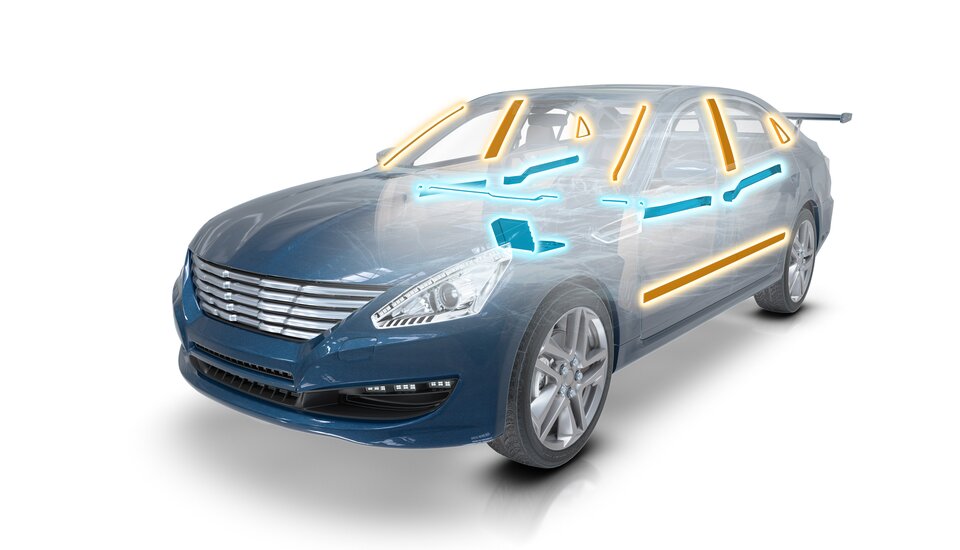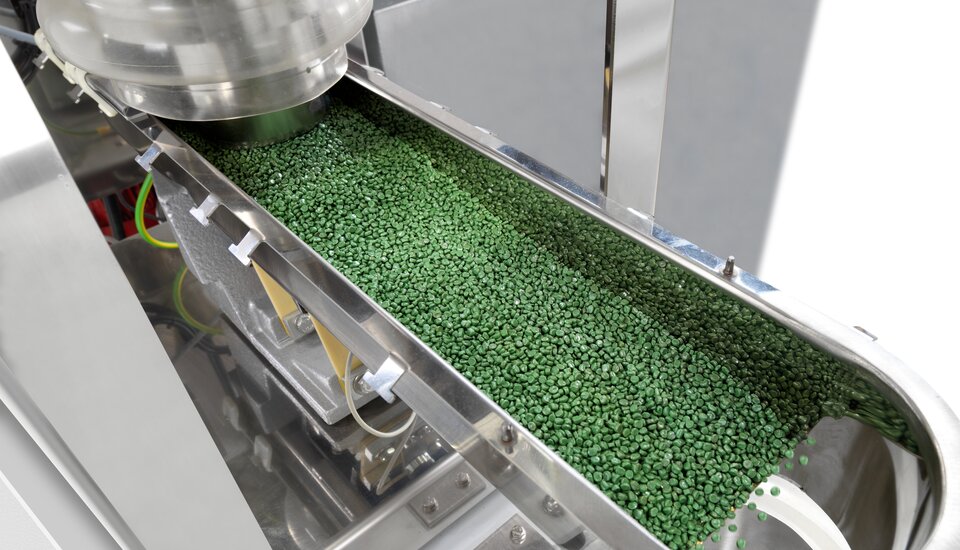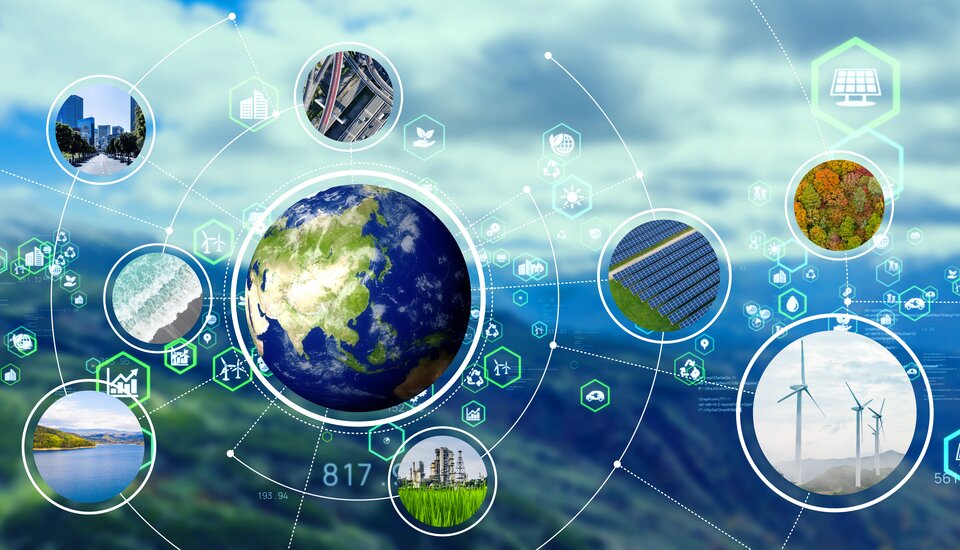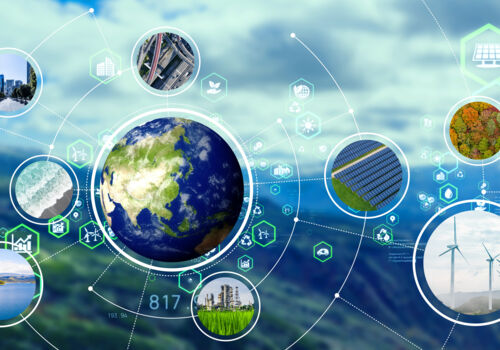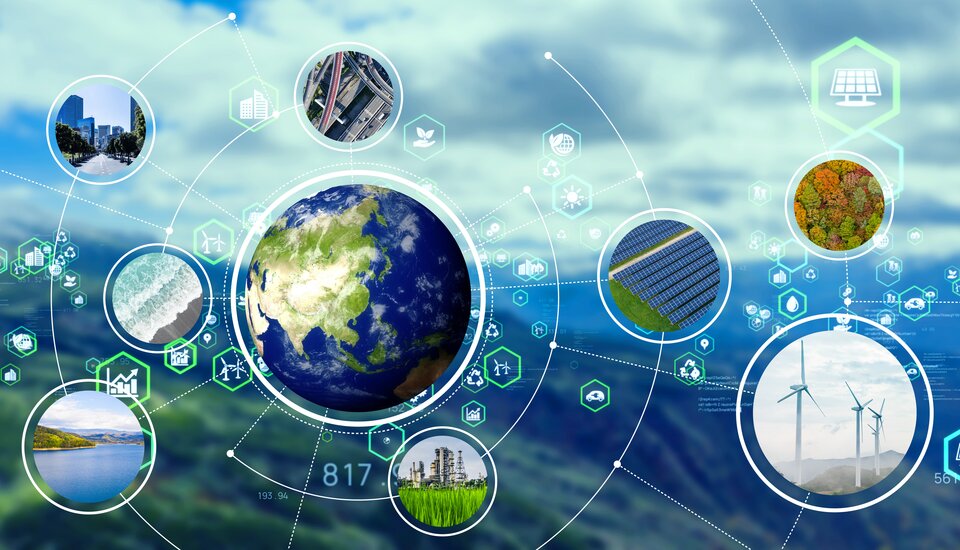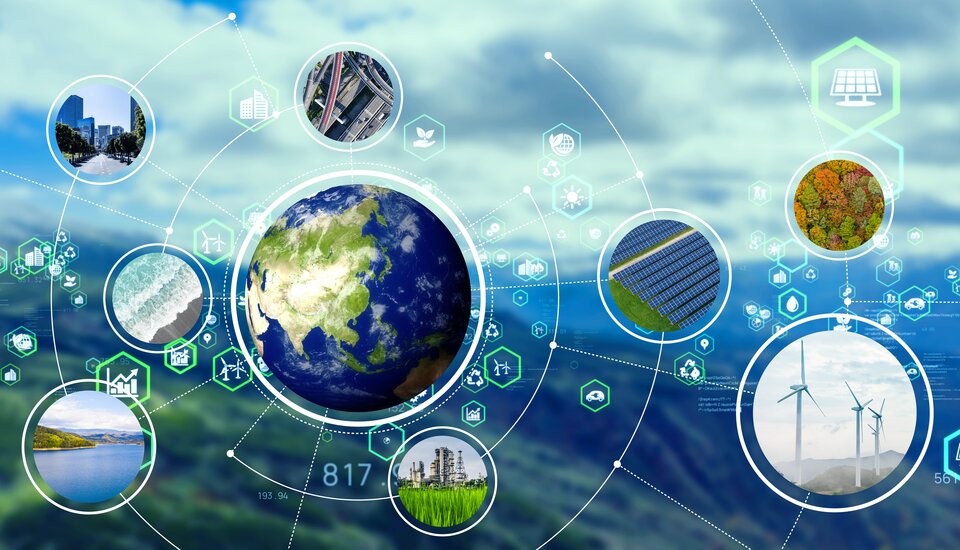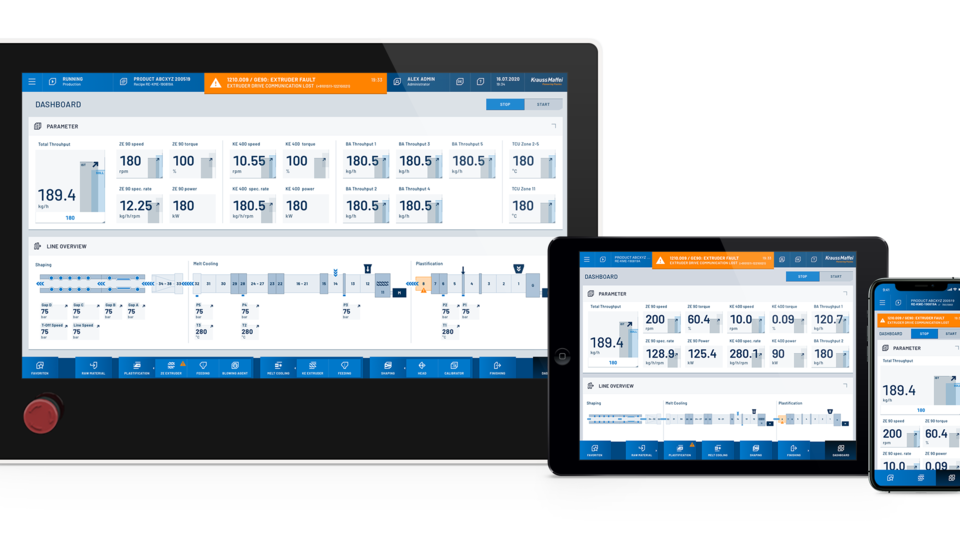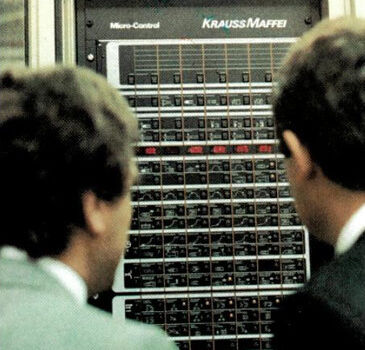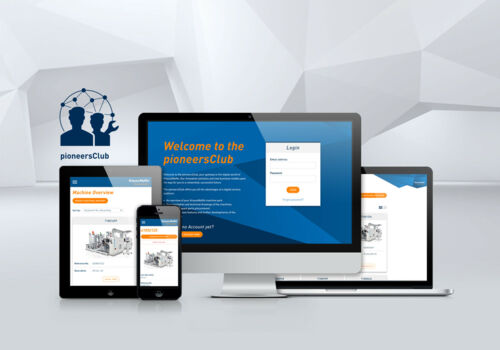
Durabilité
“As machine builders, we demonstrate how our customers can make a contribution to sustainability with our machines.”
| KraussMaffei
Interview with application expert Dr.-Ing. Christina Härter
We all hear it every day in the media: Plastics are massively under criticism and is considered as second major problem caused by mankind. So is there only the one way to suppress plastics packaging? No, not with an industry who is aware of the challenge and which is also working on environmental solutions. At K 2019 in Düsseldorf, Dr.-Ing. Christina Härter explains how KraussMaffei supports its packaging customers.
KraussMaffei
The issue of plastic waste is currently the subject of intense public debate. Are the discussions within the industry similarly heated or how are we to imagine it?
Christina Härter
The discussions are certainly somewhat more objective, but no less passionate. Our teams have know-how about the machine technology, concerning the plastics themselves and regarding the processes – yet, at the same time, they are consumers. The messages that cause amazement due to the poorly researched content are shared internally, but reports are also forwarded that, in our view, have valid or noteworthy content. And, of course, we have many workshops and goals dedicated to the topic of sustainability and how we can best support it. We have been dealing with sustainable packaging solutions internally for some time now – because we are also aware that we have a responsibility.

Dr.-Ing. Christina Härter
Head of Applications Technology at KraussMaffei HighPerformance AG (NETSTAL Product Brand)
KraussMaffei
So the issue is not really new for the packaging industry. What goals have already been set and what solutions are there for more sustainable packaging?
Christina Härter
One of our main goals is the concentration on thin wall thickness. Together with our toolmaker partners, we have been pursuing this goal for years. Initially, the focus was on greater performance and therefore higher injection dynamics. This was followed by developments towards lower-viscosity materials by the material manufacturers. And, in recent years, we have focused on the injection-compression molding of packaging in order to arrive at even thinner walls, like we show on the Glaroform booth this year. An injection molding process paired with IML is no problem for us with the high-performance machines of the NETSTAL ELION and ELIOS series.
We are also paving the way in the direction of bio-based and biodegradable materials. Our trade fair application uses a material based on tall oil, a waste material from the manufacture of paper. We also regularly test biodegradable plastics on our NETSTAL machines, but the market is still cautious in this regard.
"Tall oil is extracted from wood and would be a waste product from paper manufacturing. Its use in the plastics industry saves crude oil."Christina Härter, Head of Applications Technology KraussMaffei HighPerformance AG
KraussMaffei
How is politics involved in this issue? Does this go hand in hand with the ideas and goals of the industry?
Christina Härter
Yes and no! Like many others, the bans on cotton swabs or balloon rods are not what will get us closer to sustainability. But there is also political action that can bring movement to the sector: Specifications for recycling material or the requirement that caps must remain on bottles bring new approaches that were unthinkable just a few years ago. In principle, however, it would be desirable for politicians to take a closer look at the plastics industry and make targeted, well-considered decisions.
KraussMaffei
Everyone is talking about the Circular Economy. But what exactly does that mean and is there "one" solution at all or do you also envisage different approaches?
Christina Härter
With a circular economy, there will definitely be a number of ways. First and foremost, regulated waste collection is important. Here, in Central Europe, this is self-evident, but in some southern European countries the collection of waste is not sufficient to meet the EU´s recycling targets. There are also various possibilities for recycling. A part can be reused as such, but the material can also be chemically or mechanically processed.
Exhibit at K 2019: Sustainable packaging, produced in a resource-saving way
By using alternative materials in the packaging industry, crude oil can be saved. The NETSTAL ELIOS requires around 20% less energy than comparable machines from other manufacturers.
KraussMaffei
What packaging do you produce here at K 2019 on the NETSTAL ELIOS? And what is sustainable about it?
Christina Härter
We manufacture a packaging cup for cream cheese in a six-cavity mold from Glaroform. The part is IML-decorated and is removed by a handling system from Beck Automation. With a 1:190 wall thickness to flow path ratio, the part does not have the ultimate thin wall thickness because a certain stiffness is required for the product. What is sustainable, as mentioned earlier, is the polypropylene from Sabic, which is based on tall oil. Tall oil is extracted from wood and would be a waste product from paper manufacturing. Its use in the plastics industry saves crude oil. But the energy consumption of our machine of 0.37 kWh/kg is also worthy of note. The parts we produce at the trade fair are mechanically recycled, as we do at every exhibition.
KraussMaffei
In your opinion, what will prevail in the main over the long term? For example, are bioplastics always better?
Christina Härter
The term bioplastics covers a broad field. It includes plastics such as the processed PP that consists of renewable raw materials, which is not biodegradable but can be mechanically recycled. It also includes bio-based, biodegradable plastics. Ultimately, I believe that one single plastic will not prevail but that some plastics will be more suitable for certain applications than others. For example, coffee capsules, as we show on the Campetella booth made of biodegradable material make more sense than yogurt pots made of the material. But if the PP yogurt pot is later recycled mechanically or chemically, this is also not a bad solution.
KraussMaffei
What is the contribution of a machine builder like KraussMaffei? How do you support your customers?
Christina Härter
As machine builders, we demonstrate how our customers can make a contribution to sustainability with our machines. In a consultation or directly at the machine, we discuss the optimization of existing systems or launch new projects.

High-Performance for sustainable thin-wall packaging
The NETSTAL ELIOS 4500 at K 2019
KraussMaffei
Are there already concrete projects and customers that produce more sustainable packaging?
Christina Härter
Of course, there are. Sustainable packaging covers a wide range of different characteristics. Among the preforms, thin walled preforms made of recycled PET with short neck should be mentioned here. We have customers who have been producing plant pots made of recycled polypropylene for years and that are extremely thin walled. And in Kenya, for example, we have a plant that produces thin walled cups using injection compression molding with a wall thickness/flow path ratio of 1:500.

Christina Härter
"We regularly test biodegradable plastics on our NETSTAL machines, but the market is still hesitant."
KraussMaffei
In addition to the packaging itself, the manufacturing process must also be considered. What sustainability advantages does injection molding have over other manufacturing methods?
Christina Härter
According to a study by the Eastern Research Group, CO2 emissions are lower than for thermoforming because less energy is required with the use of fossil fuels. The wall thicknesses, which we produce via Injection Compression Molding, are today in ranges of the thermoforming.
KraussMaffei
How does energy consumption behave compared to other machine suppliers?
Christina Härter
No, the energy consumption differs – depending on the application and the machine. We made a comparison test with a competitor machine and found that the energy consumption is a good 20% lower on the NETSTAL machine for this packaging application than on the comparison machine that also came from the high-performance sector. Sustainability often has something to do with austerity as well: If I save on energy or emissions, I am doing something good for the environment.
KraussMaffei
From your point of view, do the topics sustainability and circular economy also pose risks for your business as a plastics machine supplier or do the opportunities outweigh the risks?
Christina Härter
I am basically an optimistic person and I think the opportunities outweigh the risks. To continue now as before would be to close your eyes to reality and march on into a dead end. At the moment there is a lot going on in the plastics industry and that makes it exciting to continue to lead the way here with innovative pioneering solutions in the future.
Contact
christina.haerter@kraussmaffei.com
